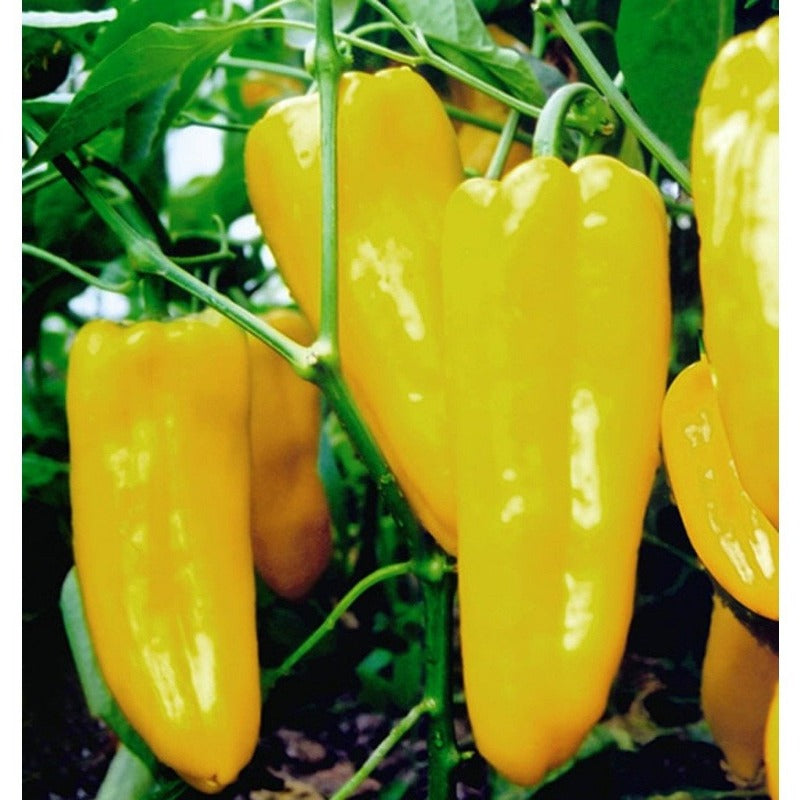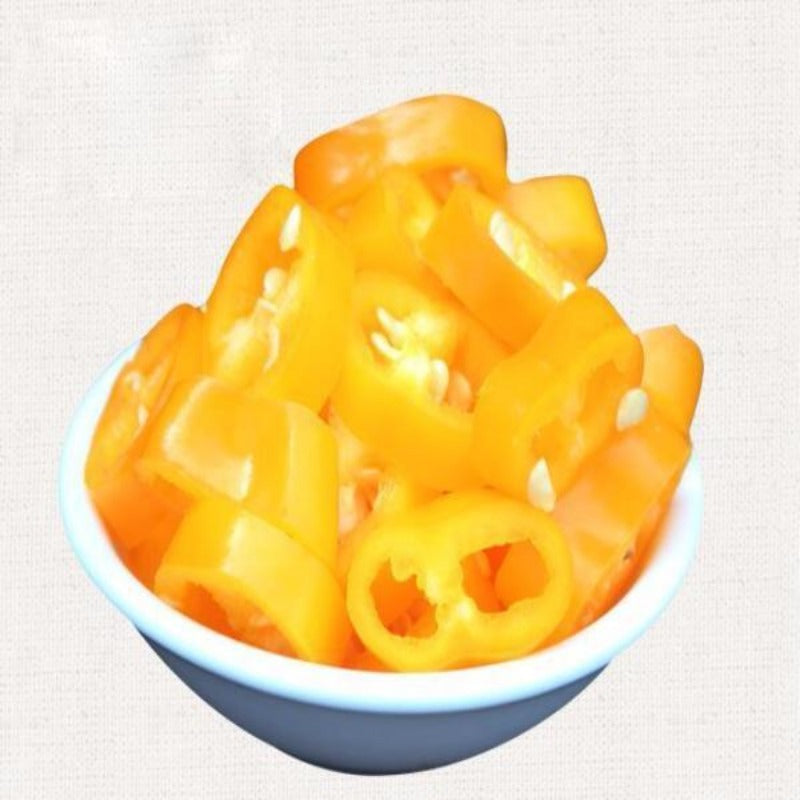- Soil requirements: Giant yellow pepper seeds thrive in well-drained, fertile soil with a pH level between 6.0 and 6.8. The soil should be rich in organic matter to support healthy growth.
- Sunlight needs: These seeds require full sun exposure, which means they need at least 6-8 hours of direct sunlight each day.
- Watering requirements: Giant yellow pepper plants need consistent moisture. Water them regularly, ensuring the soil remains evenly moist but not waterlogged. It's best to water them in the morning to allow the foliage to dry out during the day.
- Planting season: The best time to plant giant yellow pepper seeds is in the spring, after the last frost date has passed. In warmer climates, they can also be planted in late summer for a fall harvest.
- Depth and spacing: Plant the seeds about 1/4 inch deep and space them 18-24 inches apart in rows that are 24-36 inches apart. This spacing allows for adequate air circulation and room for the plants to grow.
- Germination time: Giant yellow pepper seeds typically germinate within 7-14 days under optimal conditions. Maintain a soil temperature of 70-85°F (21-29°C) to ensure successful germination.
- Maturity time: Giant yellow peppers usually reach maturity in about 70-80 days after transplanting. The exact time may vary depending on growing conditions and care.
- Harvesting time: The best time to harvest giant yellow peppers is in the early morning when the temperatures are cooler. This helps to preserve the peppers' crispness and flavor.
- Harvesting tips: Use a sharp knife or pruning shears to cut the peppers from the plant, leaving a small portion of the stem attached. Handle the peppers gently to avoid bruising. Store them in a cool, dry place or refrigerate them to extend their shelf life. For best flavor, use the peppers soon after harvesting.






